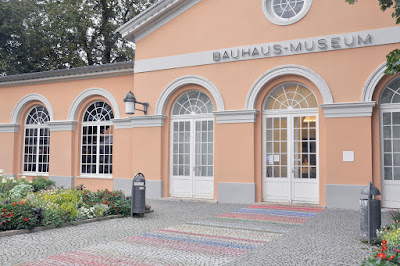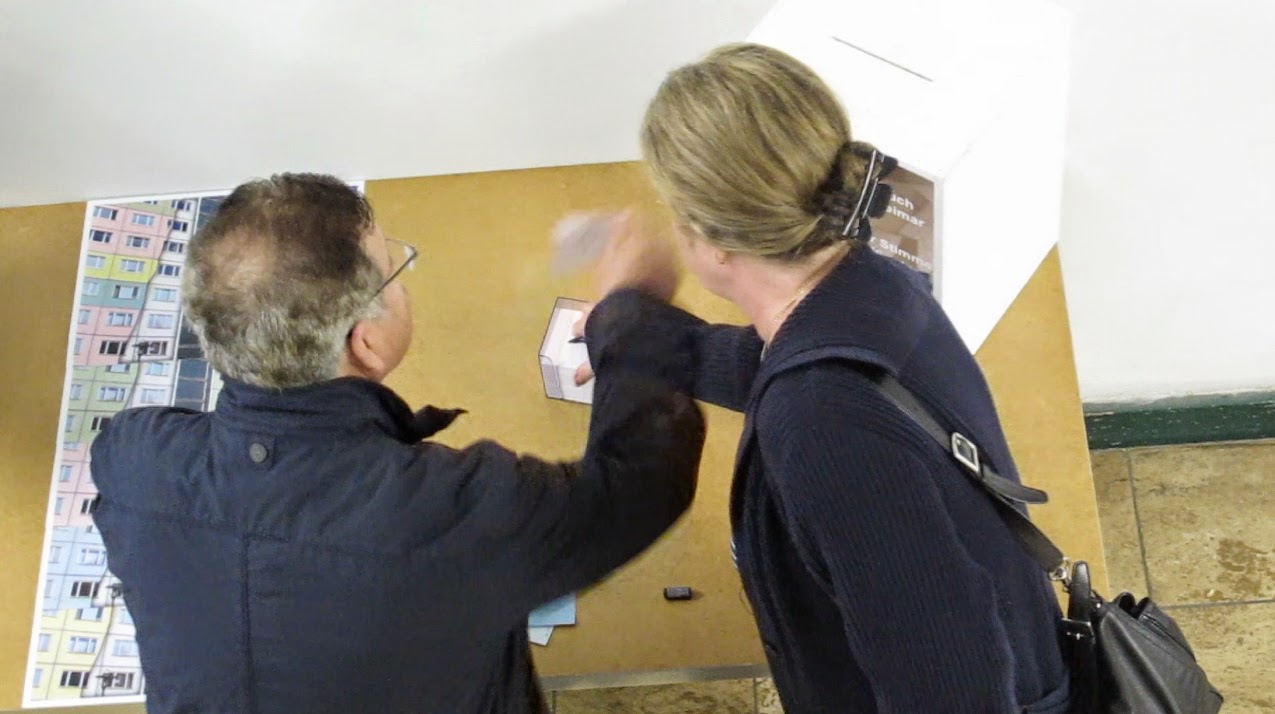If only to kill time
If only to kill time was an intervention at the entrance of the Bauhaus Museum Weimar. With the help of Saman Pourisa I painted one of the many textiles, done by female students of the Bauhaus in the 20's. The title refers to the words spread by Oskar Schlemmer, artist and professor of the Bauhaus: "Where there is wool, there is a woman who weaves, if only to kill time."
During these years just a few women were allowed to take part in workshops other than textile. The avant - garde leaders developed progressive ideas in relation to art, design and architecture but still they happened to be strongly conservative towards the role of women in society.
Nowadays, almost a hundred years after, the production of the weaving workshop is not displayed in the museum, instead, is being kept in a storage room.
The nine meters long reproduction was done with chalk, during one week.
If only to kill time fue una intervención en la entrada del Museo Bauhaus de Weimar. Con la ayuda de Saman Pourisa pinté uno de los tantos textiles, hechos por mujeres estudiantes de la Bauhaus en los años 20. El titulo refiere a las palabras del artista y profesor de la Bauhaus, Oskar Schlemmer, "Donde hay lana, hay una mujer que teje, tan solo para perder el tiempo".
Durante estos años pocas mujeres podían acceder a otros talleres que el textil. El grupo de artistas avant - garde desarrolló novedosas propuestas en el arte, diseño y arquitectura, sin embargo su visiones sobre la mujer resultaron ultra conservadoras.
Actualmente, casi cien años mas tarde, la producción del taller textil no es exhibida en el museo y se encuentra olvidada en un deposito.
Esta reproducción fue realizada con tiza durante una semana.








































